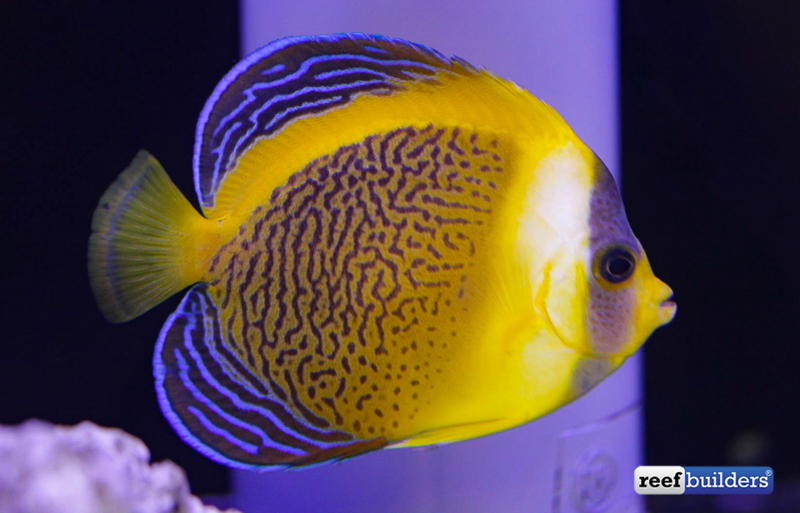A xanthic specimen of the scribbled angelfish, Chaetodontoplus duboulayi, was discovered in Mackay, eastern Australia. The news of this very unusual female scribbled angelfish comes to us from Aqua Lovers in Japan who received this fish and shared an incredible photo spread of this very rare specimen.
Scribbled angelfish were once one of the most highly sought after species of large angelfishes, due to their attractive coloration and sexual differences, making it easy to pair them up. Due to the shift in marine aquariums going mostly towards reef tanks and smaller fish, the scribbled angelfish is much less frequently seen, but gems do show up once in a while.

Actually, compared to many other species of angelfish the scribbled angelfish is surprisingly consistent in their look and appearance. Hence, making the discovery of a partially xanthic specimen all that much more surprising. A full xanthic specimen would replace nearly all of its dark coloration with a yellow color, but as you can see from the photos this scribbled angel seems to exhibit only conditional xanthism over its body.

A normal scribbled angelfish has body which is mostly dark, with a light reticulated scribbled pattern sandwiched between the dorsal and anal fins. In mature males the scribbling becomes fine metallic blue lines which are less scribbled and more longitudinal from the head to the tail. Furthermore, the yellow dorsal stripe at the base of dorsal fin of juvenile scribbled angels mostly fades away into a fairly thin wedge.

Meanwhile our partially xanthic scribbled angelfish has a very pronounced subdorsal fin which is much wider than it would normally be, even in a juvenile. More importantly, the base coloration has become a darkened orange color, greatly accentuating the scribbled pattern of this fish all over its body. Interestingly this specimen’s tail is not quite as bright yellow as in a normal Chaetodontoplus duboulayi with the slightest trail of dark color at the edge of the tail.
This is only the second xanthic scribbled angelfish that has ever been documented, the first was a small female which showed the bright yellow base coloration and bold scribbles, but not the exaggerated yellow band. We’re not sure what is going on with this fish’s partial xanthism, but the result is for a striking fish that could be even more spectacular if it some day develops into a male. [Aqua Lovers]






